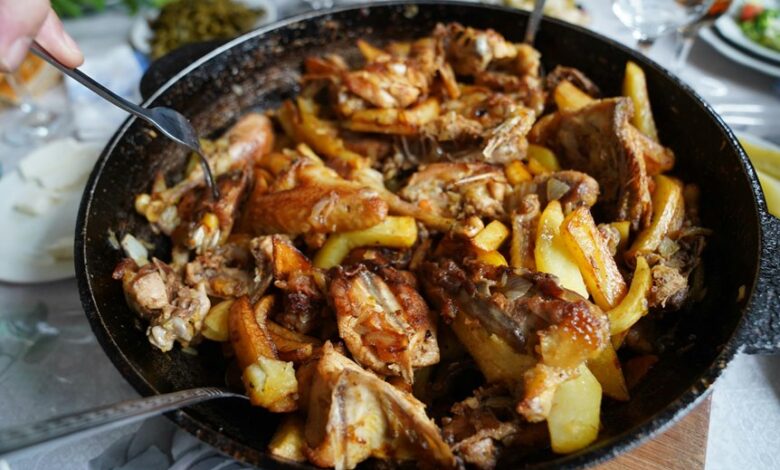Picadillo English: Translating This Latin Dish for Everyone

Picadillo is more than just a dish; it embodies a rich tapestry of cultural influences. This savory blend of ground meat and vegetables weaves together Spanish and Latin American traditions. Its unique flavors adapt beautifully across various regional interpretations. As culinary enthusiasts explore the essence of picadillo, they uncover not only its history but also its evolving identity. What makes this dish resonate with so many, and how have its variations transformed over time?
The Origins of Picadillo
Picadillo, a savory blend of seasoned ground meat and vibrant vegetables, boasts a rich history that traces back to the culinary traditions of Spain.
Its origins reveal a tapestry of cultural influences, merging Spanish flavors with local ingredients across Latin America.
This dish holds historical significance, symbolizing the fusion of diverse culinary practices that celebrate freedom and creativity in cooking.
Key Ingredients and Their Roles
At the heart of picadillo lies a harmonious blend of key ingredients, each playing a significant role in crafting its unique flavor profile.
The careful spices selection enhances the dish’s complexity, while the choice of meat types serves as the foundation for its richness.
- Ground beef, providing a savory base
- Olives, adding a briny contrast
- Tomatoes, contributing acidity and depth
Regional Variations Around Latin America
While the essence of picadillo remains consistent, regional variations across Latin America showcase the diverse culinary traditions and local ingredients that shape this beloved dish.
In Cuba, olives and raisins add a sweet-salty contrast, while in Mexico, spices like cumin enhance the flavor profiles.
Each adaptation reflects cultural significance, celebrating the unique histories and tastes that resonate in different communities throughout the continent.
Traditional Preparation Methods
Crafting traditional picadillo involves a series of meticulous steps that highlight the dish’s rich heritage.
This beloved recipe often relies on slow cooking, allowing flavors to meld beautifully. Many families pass down treasured recipes through generations, ensuring that each preparation remains unique yet authentic.
- Sautéing aromatic vegetables
- Incorporating spices for depth
- Simmering with patience for optimal flavor
Modern Twists on Picadillo
As culinary enthusiasts seek to innovate traditional recipes, picadillo has become a canvas for modern interpretations that blend cultural heritage with contemporary flavors.
Among these innovations, vegan picadillo emerges, using lentils and plant-based proteins to satisfy diverse diets.
Additionally, picadillo tacos showcase this versatility, offering a delicious twist that allows for creative toppings, making them a favorite for both traditionalists and adventurous eaters alike.
Serving Suggestions and Pairings
When serving picadillo, selecting the right side dishes can elevate the meal to new heights.
Common accompaniments such as fluffy white rice or fried plantains beautifully complement the dish’s rich flavors.
Additionally, pairing it with a refreshing beverage, like a citrusy mojito or a light beer, can enhance the overall dining experience.
Ideal Side Dishes
Although picadillo is often celebrated for its rich flavors and hearty texture, choosing the right side dishes can elevate the meal to new heights.
Complementing this dish with thoughtful accompaniments enhances the dining experience:
- Fluffy white or brown rice options
- Sweet fried or baked plantain pairings
- Crisp avocado salad with lime dressing
These selections harmonize beautifully, creating a symphony of textures and tastes.
Beverage Pairing Options
What beverages can truly enhance the experience of enjoying picadillo? Bold cocktail choices, such as a zesty mojito or a smoky margarita, complement the dish’s rich flavors beautifully.
For wine recommendations, a medium-bodied red like Tempranillo or a crisp white like Sauvignon Blanc can elevate the meal, balancing the savory notes while refreshing the palate, creating an unforgettable dining experience.
Conclusion
In conclusion, picadillo stands as the culinary equivalent of a warm hug—if hugs could be seasoned with cumin and a dash of nostalgia. As food enthusiasts navigate this flavorful landscape, they might just find themselves pondering the age-old question: can one truly achieve enlightenment through a plate of ground meat? Perhaps it’s time to unite over this dish, proving once and for all that picadillo is the universal language of love, spice, and questionable dietary choices.




